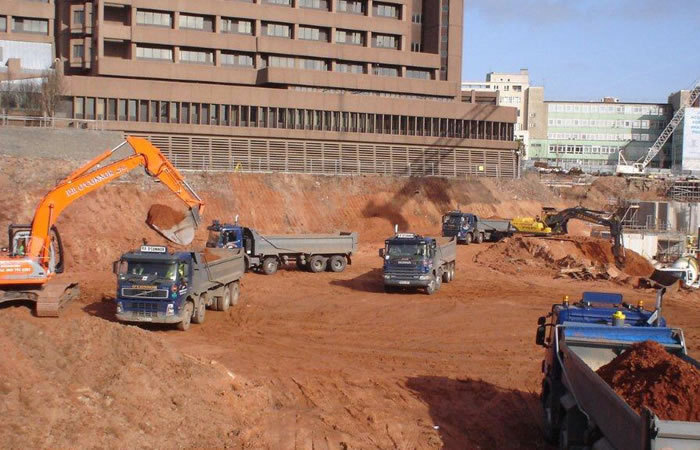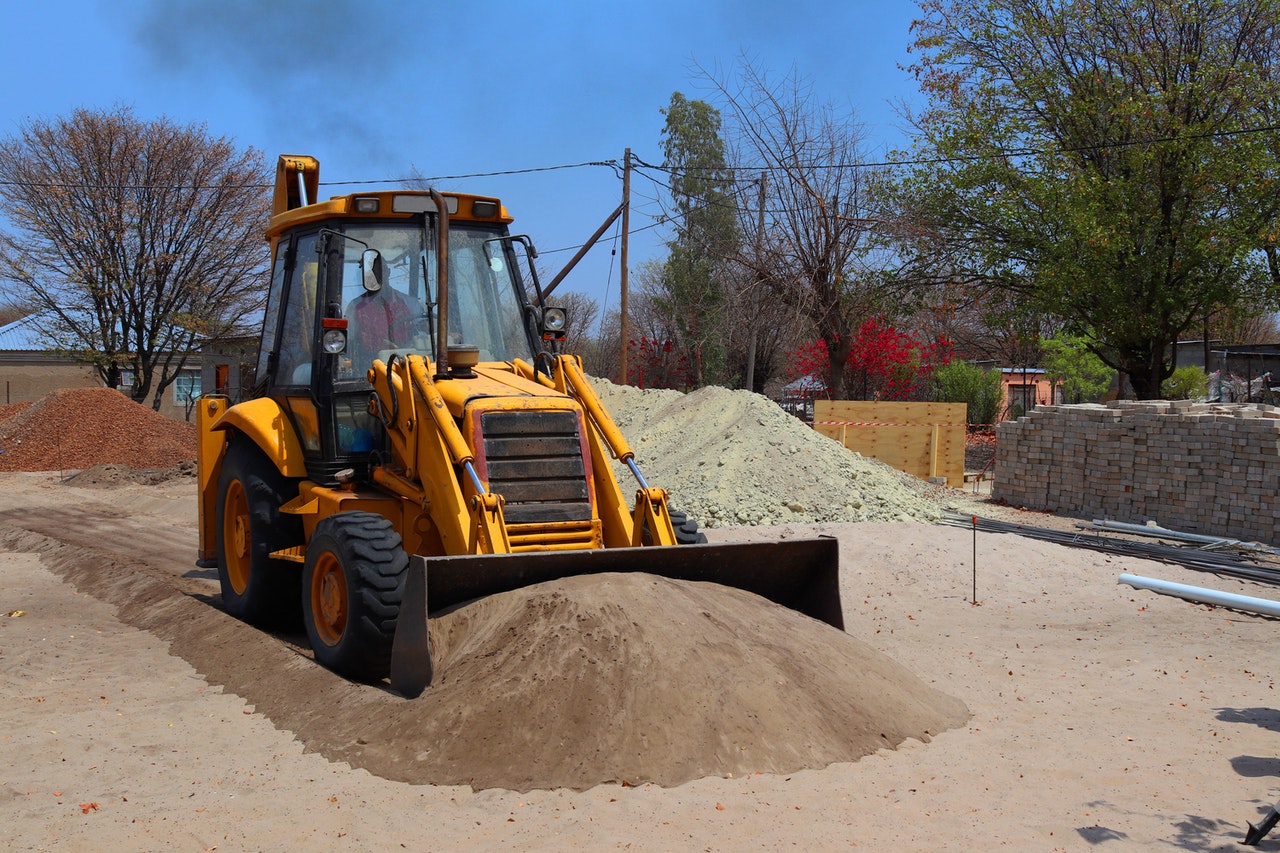There are several different types of foundation ground anchors including helical screws, tension cables, concrete dowels, and passive earth pressure plates. These are described in more detail below:
Helical Screws: A screw with a screw thread that is wrapped around an anchor rod and fixed into place using grout. The design allows for the dissipation of forces at angles up to 45° whilst still maintaining its primary function as a connection between the building and ground.
Tension Cable: An arrangement of connected steel rods where each end has been welded to an eyebolt or anchoring plate, which is then embedded in the ground. This enables high tension forces to be carried by friction between individual strands of wire.
Concrete Dowels: A dowel that has been installed into the base of a foundation by means of jet grouting or other similar technique, with leaves at each end that are embedded into the ground.
Passive Earth Pressure Plates: The installation method includes dropping a heavyweight onto an earth pressure plate. The force required to make the part slip down depends on how far it needs to go in order to create sufficient resistance against soil pressures.



Advantages of Foundation Ground Anchors
2) Non-penetrating, a non-permanent system with no risk of corrosion. The ground anchors are not connected to the foundation and do not need any additional civil engineering work in order to be installed.
3) Steel screw piles have good moment resistance, which means they can develop a high load capacity when penetrating into soft ground or sand. Thus it is possible to build foundations on very weak soil without having them fail due to lack of strength from the ground. When being used in gravels it is common that steel screws perform well when a certain amount of pulling out torque has been reached in relation to their penetration depth in the gravel layers, since at this point there will be slight movement of the gravel around the screw.
4) Steel screw piles have been shown to be able to survive from being attacked with strong chemicals, such as acids and salts, which means it is possible for them to hold up a building even if they are found in difficult environments where corrosion can be a problem.
5) Foundation ground anchors manufactured from steel tend to offer very good value for the money spent on them because they often last much longer than other types of foundation ground anchors that are made from materials like plastic or concrete. For example, according to tests performed by a Swedish organization (Vinnova), it has been shown that steel screws can endure more than ten times as much force as plastic screws before breaking. Therefore steel screws will not only last longer but they can be used in many different types of ground, whereas plastic screws are only suitable for use with relatively soft soil.
6) Foundation ground anchors are very easy to install because all that is required is for them to be driven into the seabed by using a hammer drill or power driver. This means that foundation ground anchors are not only fast and reliable, but they also require little skill for them to be installed correctly.
7) When compared to other types of foundations it has been shown that even if the installation costs are high, then foundation ground anchors will offer better value because they tend to pay back their installation costs very quickly through cost savings on labour costs due to reduced construction times. This could make foundation ground anchors the most cost-effective type of foundation.
8) Foundation ground anchors can be installed very quickly, thus reducing construction time and saving money for both the client and contractor. They also require less labour than other types of foundations because there is no need to construct concrete piles or pour concrete footings. This saves further costs, not just in labour but also in materials required for this work.
For more information about how you can choose your preferred anchor/foundation, then contact us for more information.


Choosing the best foundation ground anchor for your building is one of the most important design decisions you’ll make when designing your next structure. The type of foundation ground mount selected can affect structural performance, aesthetics, application costs, installation costs, maintenance requirements, and serviceability issues throughout the life cycle of the facility. To determine which type of mount is right for your project, it is imperative that you understand its characteristics and limitations.
The different types of foundation ground anchors are guy/tension mounts (cables or rods), wall brackets (pipe frames), base plates (socketed bases), embedded foundations, removable mounts (base plates and guy anchors), and foundation bolts (joined or unbolted).
Guy/Tension mounts: The primary advantage of the guy/tension mount is its ability to accommodate any foundation type. However, these types of ground mounts must be designed for specific soil conditions and they create an aesthetic challenge due to their cable location. Another limitation is that cable systems can only carry about 20% or less of a structure’s total load capacity; therefore, this means that all other loads such as dead loads, wind loads, etc., must be carried by the foundation walls themselves. This could lead to higher costs and more time spent with added reinforcement in the exterior walls.
Wall brackets: A wall bracket is a pipe frame that is attached to a basement wall and is reinforced with a rebar. A hole is dug next to the footing of the house and a PVC pipe frame is placed in it, with one end attached to the foundation wall. Then, two or more holes are drilled on each side of the basement wall, right next to footer piers at a height that would allow for proper tension on each support wire. The brackets are then connected together by a steel cable which will hold up the structure’s weight. This method creates very little damage as there is no excavation needed on your roofline or exterior walls.
A ground anchor reduces construction costs relative to using deep foundations such as caissons or drilled shafts because they don’t require excavating below your home’s foundation. The use of ground anchors with shallow foundations is common in seismic areas where soil conditions require the addition of deep footings or pilings to reach stable soils, or for homes located on expansive clay soils that expand and contract dramatically with changes in moisture content. The use of a very deep footing can create problems by separating your home from its foundation and transferring motion to the house during an earthquake.
